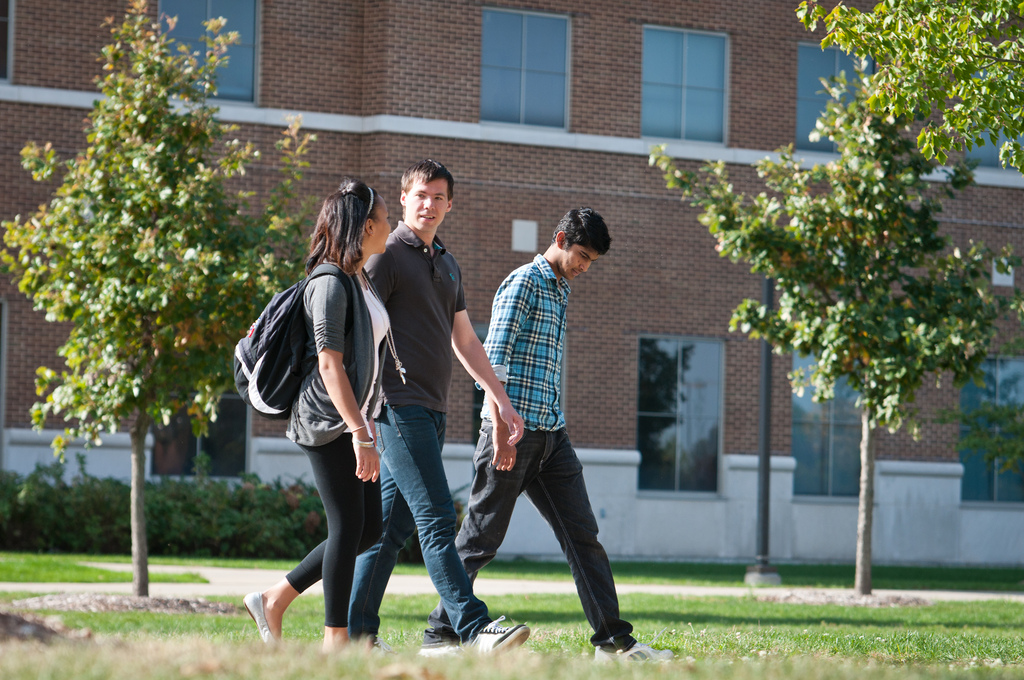
My Mexican father applied to colleges in the United States in the late 1940s and was offered scholarships by the University of Arizona and Western Reserve (now Case Western Reserve) in Cleveland. His father sat him down and drew a line from west to east across a map of the United States and said: “Below this line, they don’t like Mexicans.” It was a fateful moment, all but ensuring Dad would return to Mexico upon graduation. He did not like the cold. He would have loved Tucson.
Dad did enjoy his studies in Cleveland, and got a lot out of the experience, notwithstanding his nearly flunking music composition (not long ago I stumbled across a copy of his transcript). His was a classic liberal arts education, blending economics, history, and literature. Upon graduation, he returned to Mexico, got a job, and enrolled in an evening law school. He went on to have a successful business career, much of which involved connecting Mexico to the United States and (though not as a conscious matter) spreading American values to those who worked with him.
A fascinating new Brookings report on the foreign student population of the United States made me think of Dad’s experience, and what he and the United States got out of the deal. As Neil G. Ruiz, the author of the report, put it over the phone, migrant students build bridges between societies, and over time those bridges carry a lot of economic activity. This means that the United States is, in many cases, educating the future leaders of the world, particularly the future leaders of emerging nations. We currently take in about a fifth of all students worldwide who cross borders to study, though these students still make up less than 4 percent of the entire student population in the U.S.
Ruiz and his team looked not only at countries of origin for the 1,153,459 foreign students enrolled in higher education programs between 2008 and 2012, but their cities of origin and the metropolitan areas they cluster in within the U.S. So, for instance, the data compiled by Brookings shows there were 7,109 students (F-1 visa holders) from Seoul studying in the Los Angeles area during that four-year period. Looking into the future, it’s hard to imagine a more binding tie between the two cities than the presence of all those Korean students in Los Angeles, and their connection to the city long after they graduate.
It isn’t surprising that Asia dominates the census of foreign students in the United States, although I was stunned by just how much. China alone sent 284,173 students in that period. The top 20 hometowns of all foreign students in the United States are in Asia. Saudi Arabia and other oil-rich Gulf states boast the fastest-growing contingent of students. Shockingly, the city of Riyadh, Saudi Arabia, alone sent more students (17,361) than did the entire country of Mexico (17,171).
Mexico, ranked ninth among countries sending students here, is vastly underrepresented among foreign students when you consider that it is our neighbor, our second-largest trading partner, and home to almost 120 million people. The fact that the country lags behind cities like Riyadh and Taipei in the numbers of students it sends to American universities shows that Mexico and the United States remain “distant neighbors” in some ways, as Alan Riding termed the relationship in his book of that title three decades ago.
It also shows that money talks. In addition to having many families able to pay the high cost of tuition abroad, countries like China and Saudi Arabia offer lavish scholarships to promising kids. The U.S. has a strategic need to attract more students from Mexico and other countries who don’t have this kind of financial backing. But American universities prefer to see foreign students as a profit center. Texas has long been a welcome exception to the rule, offering Mexican nationals with financial need in-state tuition at public universities as a matter of policy. Meanwhile, the Obama administration and its Mexican counterpart have announced initiatives to increase the flow of students across the border to 100,000 in coming years, but the question of who pays for all those students remains an open one.
Our policy discussions about foreign students in this country also disproportionately focus on students studying science and technology. Lawmakers, analysts, and businesses are all advocating the creation of an easier path for those pursuing advanced STEM degrees to stay and work here once they obtain their degrees. There is widespread support, echoed by the Brookings report, for a law that would automatically grant these graduates a green card.
That makes a great deal of sense, but we shouldn’t take too utilitarian a view of foreign students in this country, writing off those incapable of writing code or finding their way around a lab. Yes, we want to be the world’s innovation hub, attracting the best and brightest to our great research universities. But we also benefit from having students come here from all over the world to learn our history, as well as our democratic and capitalist values.
And that’s true even—maybe especially so—if they go back home because it was too cold in Cleveland.




Send A Letter To the Editors